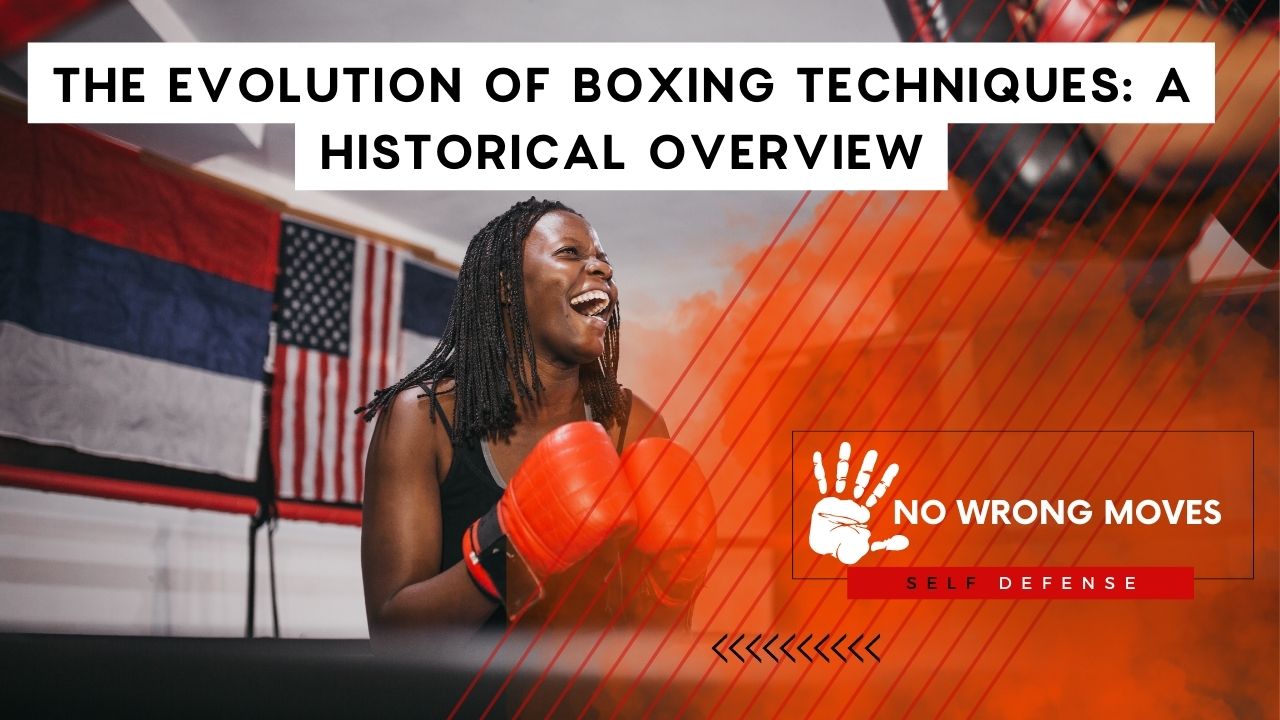
Boxing is a sport that has been around for centuries, and it has evolved over time. From ancient fighting techniques to modern technology, boxing has come a long way.
In this article, we will provide a historical overview of the evolution of boxing techniques.
The Roots of Boxing: Ancient Fighting Techniques

Boxing has roots dating back to ancient times when it was used as a form of combat. The earliest evidence of boxing dates back to ancient Sumeria, around 3000 BC.
In those early times, boxing was a brutal and often deadly sport with no rules or regulations. It was a simple fight to the death, where the winner was the last man standing.
As time passed, boxing began to evolve and rules were introduced. The Greeks were the first to introduce boxing as an Olympic sport in 688 BC.
But even then, boxing was still a brutal and dangerous sport with no gloves or protective gear. The Romans also embraced boxing, but it was not until the Middle Ages that boxing began to take on a more modern form.
During the late Middle Ages, boxing began to change. It became less of a brawl and more of a sport, with rules and regulations introduced.
The use of gloves and protective gear also became more common, making the sport less dangerous. However, it was still far from the scientific sport we know today.
The Rise of the Scientific Boxer
In the 18th century, boxing began to change again. Boxers started to focus on technique and strategy, rather than brute force.
This led to the creation of the "scientific boxer," who used footwork, head movement, and punches to outsmart their opponents. This new style of boxing paved the way for the modern sport we know today.
Marquess of Queensberry Rules: A New Era
The Marquess of Queensberry Rules, introduced in 1867, marked a new era in boxing. These rules introduced the use of gloves, a standardized ring size, and a three-minute round system. These rules made boxing a safer and more scientific sport, and they are still used today.
The Golden Age of Boxing: 1920s
The 1920s were considered the Golden Age of Boxing. This decade saw some of the greatest boxers of all time, such as Jack Dempsey, Gene Tunney, and Joe Louis. Boxing also became a major form of entertainment, with large crowds attending fights and listening to them on the radio.
Muhammad Ali and the Art of Movement: 1960s
The 1960s saw the emergence of Muhammad Ali, who revolutionized the sport with his movement and footwork. Ali was known for his "float like a butterfly, sting like a bee" style, which emphasized agility and speed over brute force.
Ali also helped to break down racial barriers in the sport, becoming a symbol of hope and inspiration for many.
Modern Boxing: The Role of Technology
In modern boxing, technology plays a significant role. Boxers use high-tech training equipment, such as speed bags, heavy bags, and punch trackers, to improve their performance. They also use video analysis to study their opponents and identify weaknesses in their techniques.
Future Trends in Boxing: A Look Ahead

Boxing is a sport that is constantly evolving, and 2021 is no exception. With the emergence of new fighters and the introduction of new technologies, the sport is expected to be different and better.
However, the COVID-19 pandemic has forced boxing to adapt to new safety protocols, and more fights are being held in empty arenas.
Looking ahead, it is likely that boxing will continue to evolve and adapt to new circumstances. Safety and injury prevention will be a top priority, and the use of data and analytics to improve training and performance will become even more important.
With advances in technology, such as virtual reality training and wearable sensors, boxers will have access to new tools to help them hone their skills and improve their performance in the ring.
In addition to technological advancements, there will also be a greater focus on mental health and well-being. The sport can be physically and emotionally demanding, and boxers will need to take care of their mental and emotional health in order to perform at their best.
This may include access to mental health resources and support from coaches and trainers.
Overall, the future of boxing looks bright, with new technologies and innovations on the horizon. As the sport continues to evolve, it will be important to prioritize safety and well-being, while also embracing new technologies and training methods to help boxers reach their full potential.
The Wrap-Up

Boxing has come a long way from its early roots as a raw and unrefined form of combat. Over the years, it has undergone a remarkable transformation, with new techniques and strategies emerging that have helped to shape the sport we know today.
From the slick and evasive movements of Muhammad Ali to the explosive punching power of Mike Tyson, boxing has always been a sport of innovation and creativity.
Looking ahead, it's clear that boxing will continue to evolve and adapt to new technologies and changing circumstances. But no matter how much the sport changes, one thing will always remain the same: the thrill and excitement of two fighters battling it out in the ring.
Whether it's a technical chess match or a slugfest between two heavy hitters, the sport of boxing will continue to captivate and inspire fans around the world.
[author-box-jpx-fitness]
